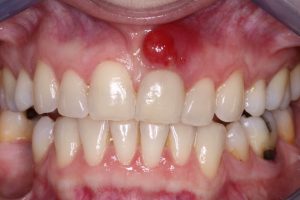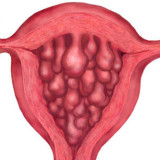In recent years, endodontic has been intensively developed and high percentage of effective root canal treatment has been made. However, there are still clinical cases that require tooth root tip resection, also called apicoectomy. Tooth root tip resection is planned and performed as an endodontic procedure with surgical access.
What is apicoectomy
Apicoectomy or tooth root resection is a procedure that is performed by cutting the mucous membrane around the tooth. The next step is to cut out the cavity in the bone, which should have a diameter of at least 4 mm. This can be done with the special drill. Then the root tip is cut off. This eliminates inflammation processes and changes that cause problems in this area.
After performing this task, the surgeon aligns the edges of the bone, cleans the cavity, and then fills the root canal tightly. Then the wound should be sewn up and healed. Sometimes the bone fragment to be removed is filled, and this is done with the help of a special material. This procedure significantly accelerates bone healing.
The whole procedure lasts no more than 60 minutes. The most important thing is to ensure the complete tightness of the root canal, because only through this we can talk about the success of the entire procedure.
Tooth tip resection usually resolves the pain and its cause, because of which the patient has sought for medical attention. This also allows to avoid a tooth extraction.
Indications for apicoectomy
Apicoectomy is most often performed after unsuccessful endodontic treatment, when complications arise, which, unfortunately, can not always be prevented.
The most common reasons for the need to perform such operation are incomplete filling of the root canal or the materials of poor quality. This, unfortunately, causes various inflammatory processes.
Often, tooth tip resection is performed because of complications after dental treatment with the help of prosthetics, in the crowns in particular.
There are also patients whose teeth have curved or very thin root canals, which makes root canals treatment more difficult or even impossible.
Rarely, but sometimes occurs tool breakings in the roots canals. Unfortunately, the possibility of such cases can not be excluded, even despite all the efforts of the attending doctor.
Among the indications for the tooth tip resection is also a root fracture in the part of its base or its puncture during endodontic treatment.
Root tip resection is also performed when the tooth is destroyed and there are inflammations around the root (granuloma, cyst, abscess, osteitis).
 Tooth cyst
Tooth cyst
Apicoectomy is successfully used for the tooth cysts treatment, which are formed due to prolonged inflammation of low intensity. Teeth cysts do not hurt, they are often felt only by a strange tingling. A large cyst can be felt even with a finger. Treatment depends on the cyst size and the affected tooth.
Contraindications to the procedure
Obvious contraindication to the teeth apicoectomy is the size of the lesions. If it exceeds 1/3 of the tooth apical part, the procedure is not performed.
Resection is not performed in people with diabetes, thyroid disease or hypertension.
Pregnancy is also the contraindication.
Just in case it is worth noting that the operation is not carried out on milk teeth.
Also among the contraindications can be noted:
- The destruction of the tooth hard tissues
- Close location of anatomical structures such as the lower alveolar nerve, maxillary sinus, which may be damaged during the procedure.
- Interferated access and visualization of the treatment area.
Course of apictoectomy procedure
1 . Anesthesia
2 . Preparation of mucoperiostal flap
3 . Osteotomy
4 . Resection
5 . Root apical treatment
6 . Reposition and seam
Anesthesia
Anesthesia and hemostasis in the field of treatment play a very important role in microsurgery. They increas the comfort of the operation for the patient and eliminates unnecessary anxiety during and after the procedure. Due to the appropriate hemostasis, the doctor has the opportunity to better see the limited surgical field, the surface of the root. This certainly increases the likelihood of a successful operation.
The anesthetic is introduced slowly, using several injections in the tooth area. It is recommended to wait for 10-15 minutes between the introduction of anesthesia and subsequent operation, so that the sensations in the soft tissues completely disappear.
After the procedure
After apicoectomy the appearance of local swelling, hemorrhage and pain are possible. Sometimes there is an unpleasant tingling. Very rarely there is a nervous paralysis or damage of the adjacent tooth.
But in most cases everything heal over in a few days. Only be sure to maintain normal oral hygiene. In the postoperative period of recovery the man should not take too hot or too cold food. And it is better to grind it to avoid unnecessary irritation. Stress should be avoided for a few days after the procedure.
Thanks to great progress, the treatments currently being performed are becoming less traumatic and painful. The latest statistical information about endodontic microsurgery shows that 90% of the made surgeries are successful.















